► We drive Denza Z9 GT
► Chinese version of the car
► EU versions expected next year
BYD’s Denza brand is launching in the UK and it’s likely kicking off with this, the new Z9 GT. A shooting brake clearly riffing of the lines of the Porsche Panamera, it promises all the technology and value you’d expect from a BYD product – but with the European styling and a premium interior to match its legacy rivals.
We attended the Denza launch event during Milan design week to find out more about the Z9 GT and the brand, but we also had the chance to drive a Chinese-spec car on a limited range of handling activities and demonstrations. There’ll be a lot of things changed between this car and the one that’ll hit the UK in 2026 – but keep reading for our initial impressions of the new Z9 GT.
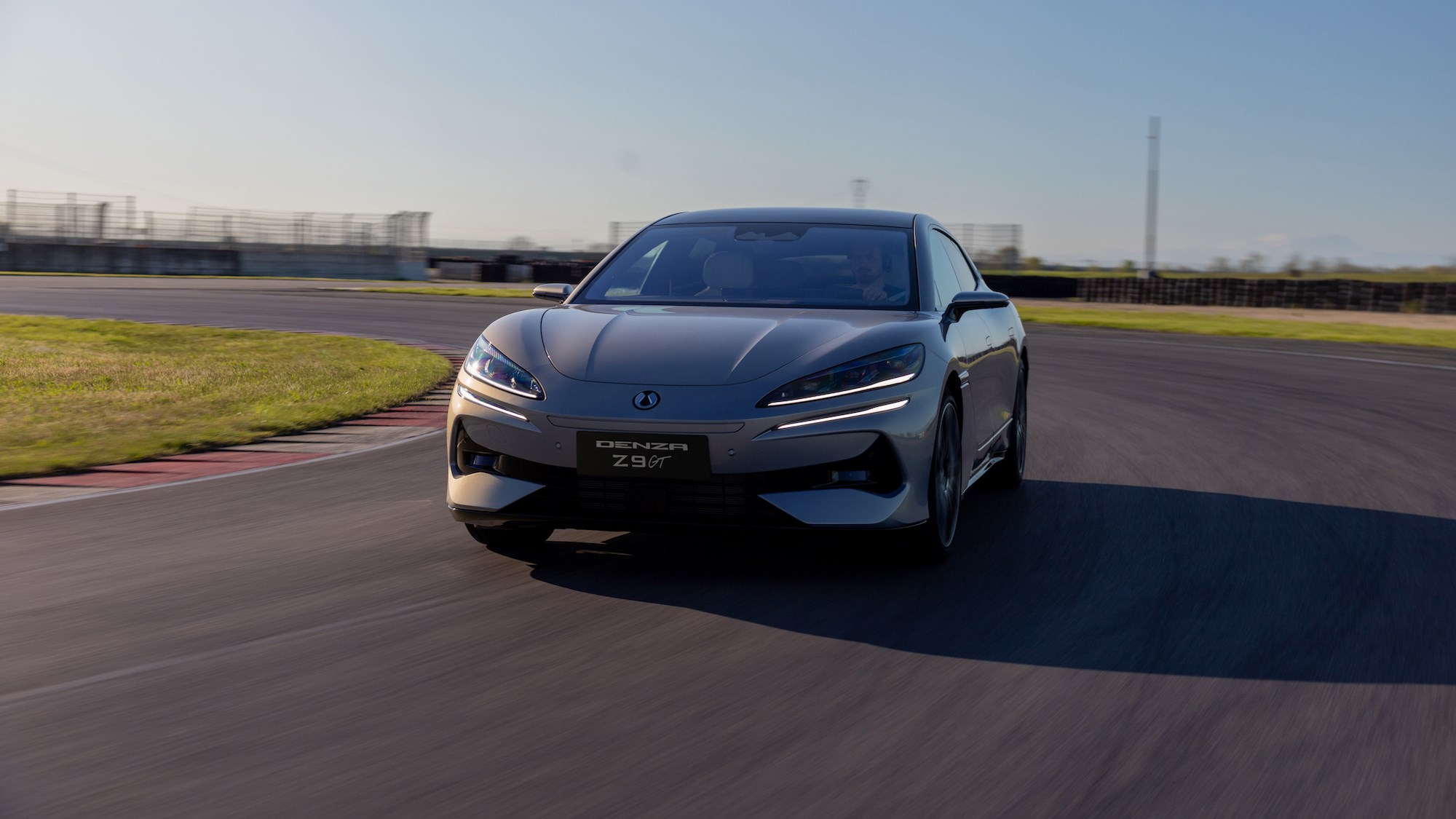
At a glance
Pros: Safe design, comfortable ride, lots of tech
Cons: Snatchy brakes in this version, steering felt unnatural
What’s new?
Denza is an all-new brand in Europe that sits above the existing BYD range, but under the ultra-luxurious Yangwang brand. It’s designed to compete with the German premium brands like Mercedes, Porsche and Audi among others – with a range topping out between six and seven cars in total. Interestingly, some of those will be borrowed from the brand’s Fangchengbao, off-road brand.
The Z9 GT may already be on sale in China, but it’s an all-new car for us. Twinned with a saloon Denza has no plan to bring to Europe, it’s a wagon with an inoffensive front-end, Porsche Panamera-style flank and muscular rear. Underneath you’ll find the BYD-powered 800-volt e3 platform which promises a handful of party tricks along with some punchy performance. Inside, you get an interior that mixes style and technology on a level above any BYD we’ve seen – and on par with the luxury market.
What are the specs?
The Z9 GT gets BYD’s e3 platform, which includes cell-to-body packaging for a 32% stiffer chassis, independent rear-wheel steering and vehicle motion control which is essentially ESC. The rear-wheel steering and individual wheel torque control enables crab walking and other weird manoeuvres, but the overall specs are more relevant.
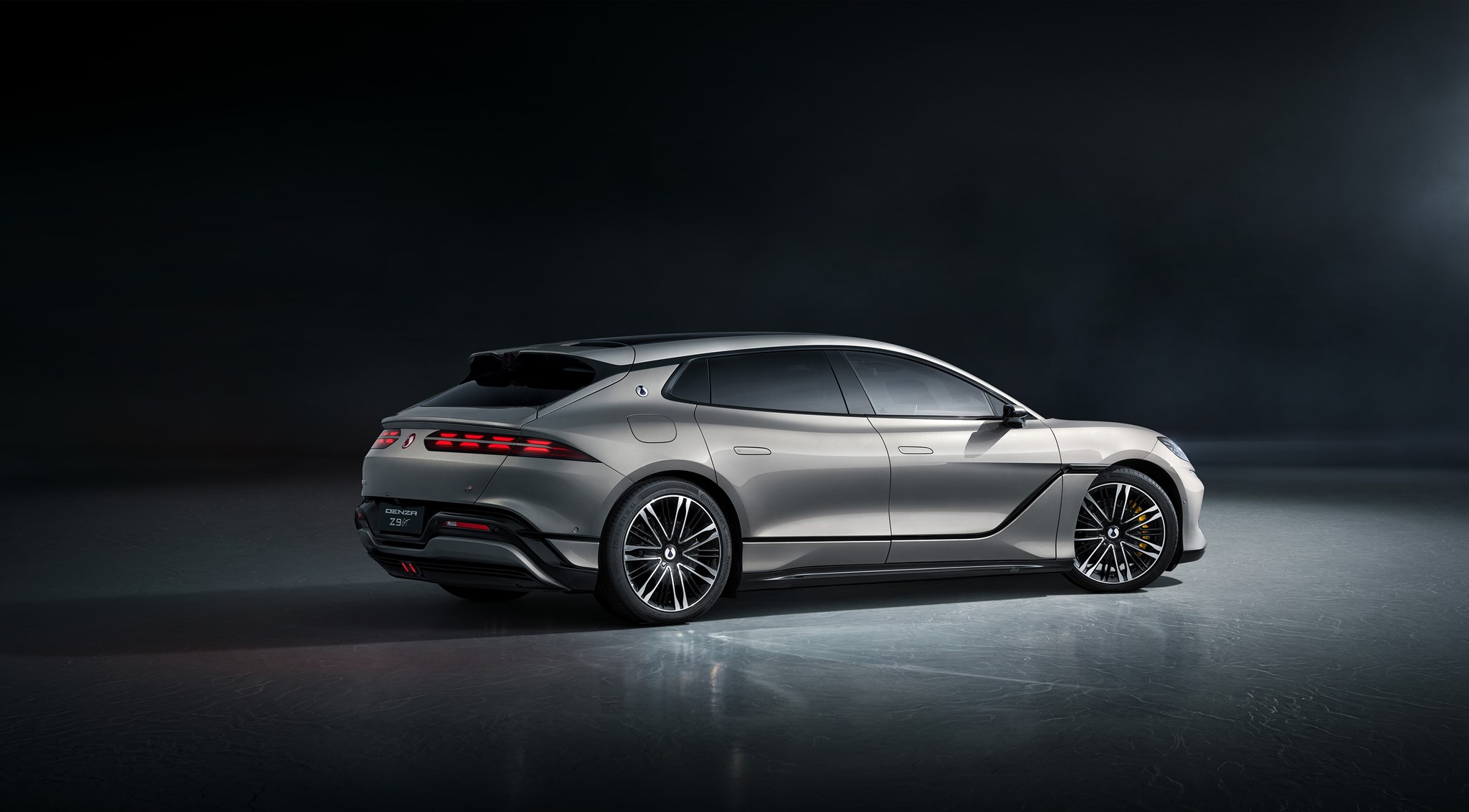
The Z9 GT will be available with BEV or hybrid powertrains: the former uses three motors (308bhp on the front axle and two 322bhp units at the rear) to make a total of 952bhp in Chinese specification cars. Combined with a 101kWh battery, it’s enough to power the BEV to 0-62mph in 3.4 seconds and a CLTC range of 391 miles. Expect something like 310 to 340 miles in the EU, factoring WLTP as well as a tweak for consumers who prioritise range over power.
We drove a Chinese hybrid car, which borrows much of the EV’s technology, but instead of the front motor you get a 2.0-litre turbocharged four-cylinder and 38.5kWh battery. The ICE part of the equation makes 268bhp and 232ft lbs of torque and works with two 295bhp rear motors to create 858bhp of power for 0-62mph in 3.6 seconds in Chinese specs. The system effectively works as a REX at lower speeds (below 62mph) and as a traditional hybrid at anything over that.
How we tested it
We drove the Z9 GT in a number of controlled activities, and were also able to observe some of its party tricks. Of course, it’s also worth noting that the cars we drove won’t be like those that eventually land on UK shores. CAR understands that among others bits, the steering and suspension will be firmed up, with the brakes possibly switching from steel to ceramic.
Nonetheless it was possible to get a rough idea of the Z9’s core DNA in the examples we drove.
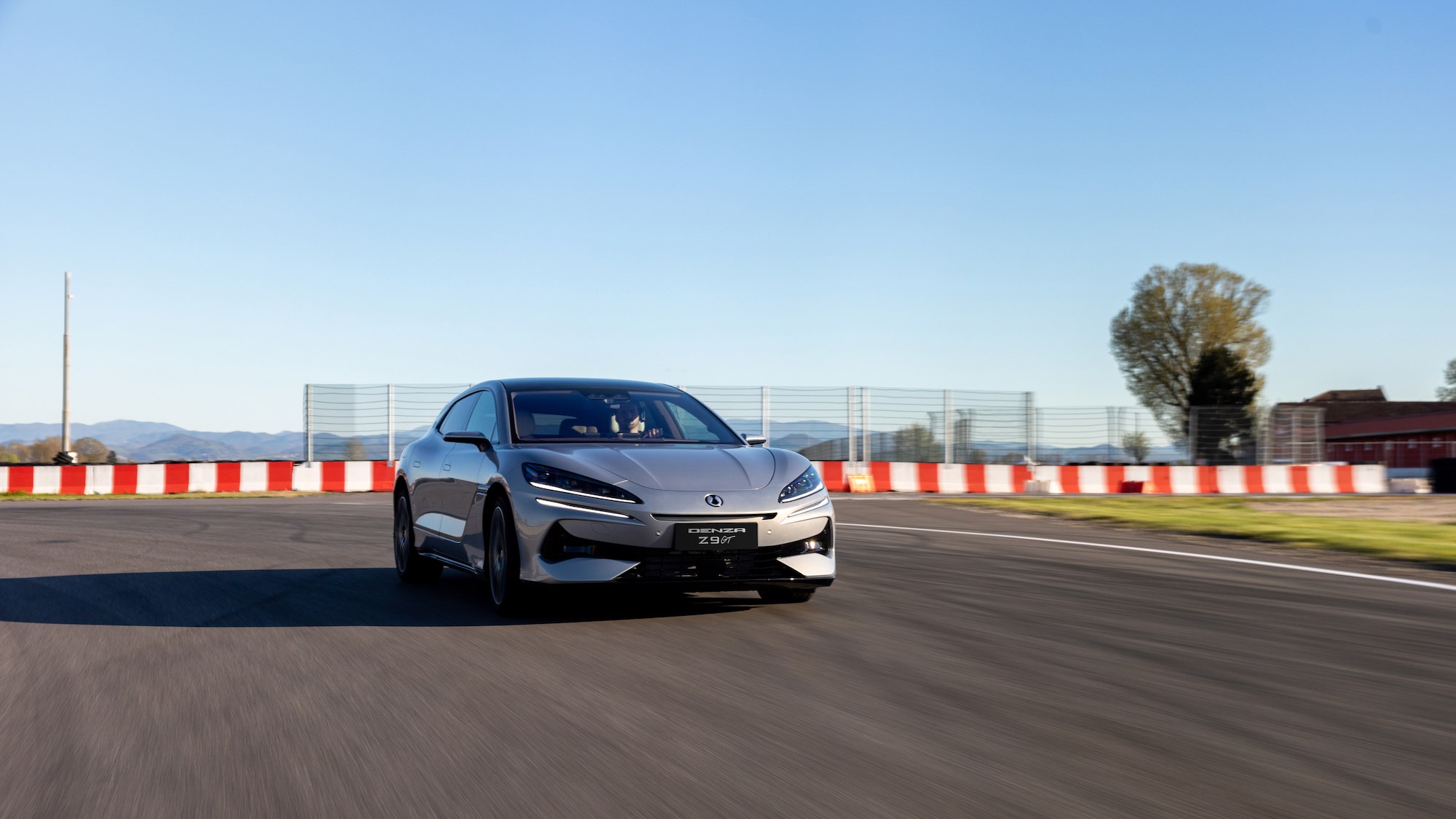
How does it drive?
First was a handling test, designed show the responsiveness and overall comfort of the Z9’s suspension. When driving on a handing road, it soaked up most bumps at 30mph, with the Denza’s suspension doing a decent job. Potholes did occasionally make it into the cabin, but we wafted over most of them.
Less good are the brakes, which offer little responsiveness at the top of the pedal before throwing down the anchors once you apply some pressure. Even after some time in the car, I continued to find them unpredictable and snatchy.
The steering was light and accurate, though Denza’s implementation of rear-wheel steering may need some fine tuning. The difference it makes to the turning circle is compelling, but it feels disconcerting and artificial in motion. Denza engineers say the rear wheels will turn 10- to 15-degrees but I’d prefer them to prioritise feel.
In the hybrid we drove, power delivery is refined – although the car seemed to hesitate slightly and felt a little breathless as we picked up the pace. At around 30mph we were able to take off in silence, but our high-speed testing awoke the engine. Switch over to the Sport+ mode and you get a more linear power delivery – along with an ultra-futuristic red interface. Star Wars fans may even notice a resemblance to the scene in which Darth Maul kills Qui-Gon Jinn.
In this mode power is more linear and the car is a little tighter and poised. With it off, the Z9 GT can waft around in a soft fashion. How much of that is the Chinese market tune, and how much is in the core DNA of the car? We’ll know more when we drive a more UK-relevant spec.
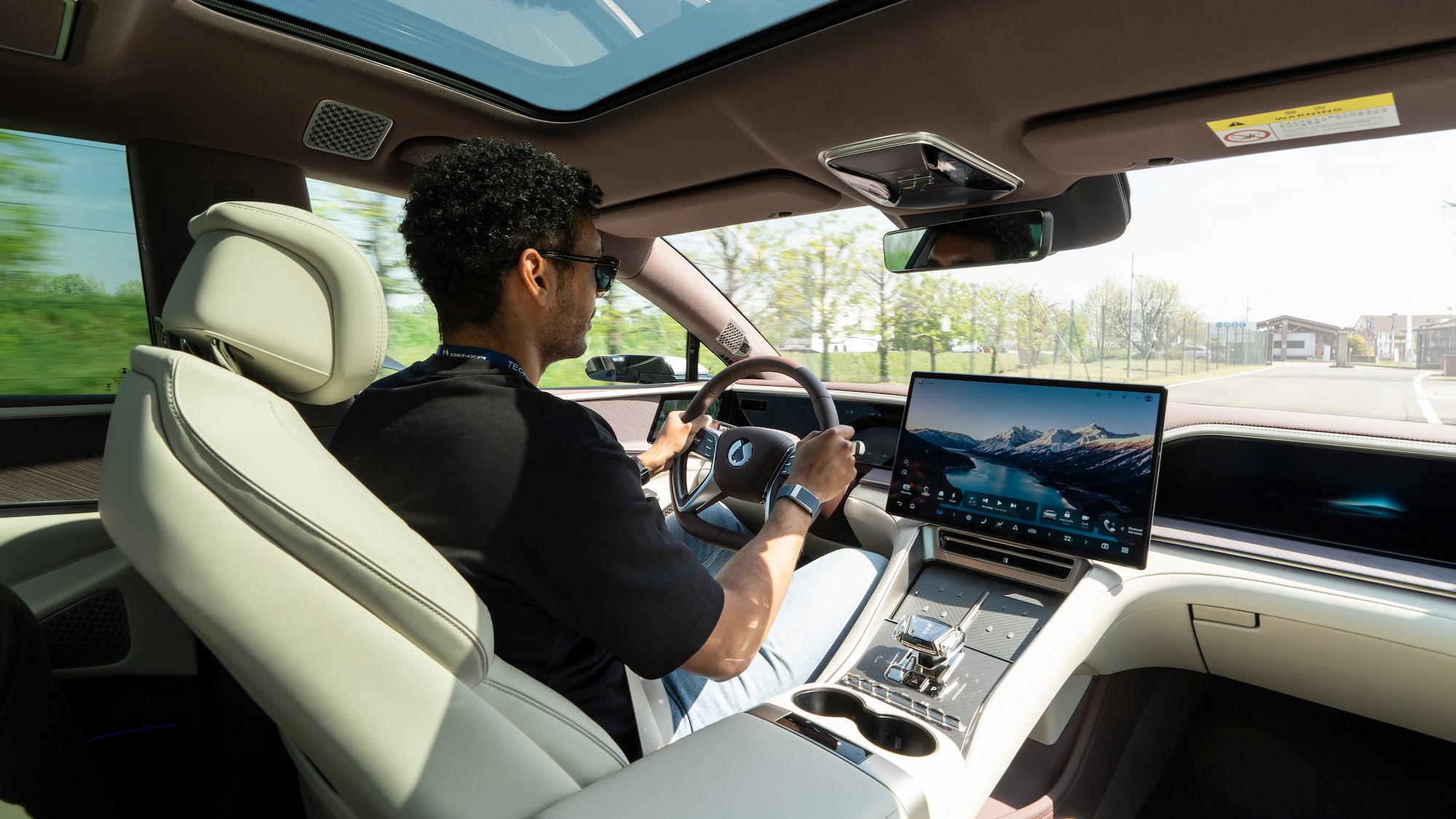
Anything else?
We also got to see the Z9 GT perform some of its other functions such as a crab walk and a mode in which it can ‘swing’ into parking spaces. This trick uses the useful rear-wheel and torque vectoring tech to conjure something altogether more bizarre. It’s the same story for crab walking, which seems as technically interesting and sophisticated as it is pointless.
What about the interior?
We also had a chance to poke around the Z9’s interior and it does indeed feel a level above what we’ve seen from BYD. Things like stitching are that bit more ornate, and you get some obvious technology front and centre: the infotainment screen measures 17.3-inches across, and it’s flanked by a couple 13.2-inch screens for the passenger and driver. Below those you’ll see a duo of wireless charging pads. There are other bits of detail, such as crystal switchgear, wooden inserts and chrome accents. Even the aero vents are fiddly: they hide themselves when not in use and can fan air from side to side if you like.
The car also boasts a 20-speaker system from French audio specialists Devialet, though we didn’t get to try that. We did however see one of its main speakers pop up from the dash – another bit of premium theatre, then.
CAR understands bits of the interior could well change for Europe though; some of the switchgear may migrate closer to the main infotainment screen, while the central-mounted shifter could move behind the wheel.
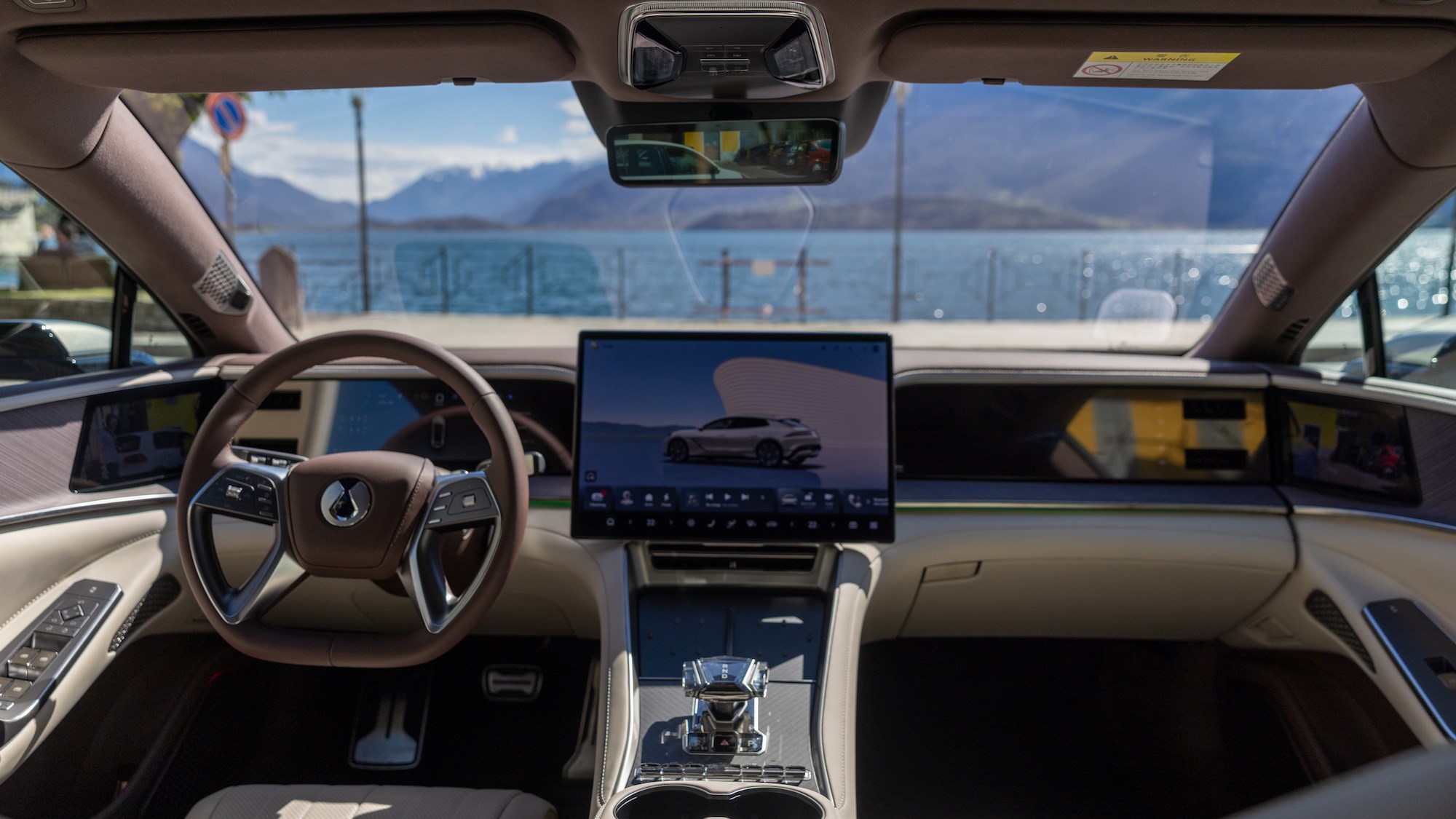
Space in the rear is impressive, and I was easily able to sit behind my own 6’3 frame. Chinese luxury is often signified by passenger legroom – hence the booming long wheelbase market in China – so it’s no surprise the Z9 GT scores well in this area.
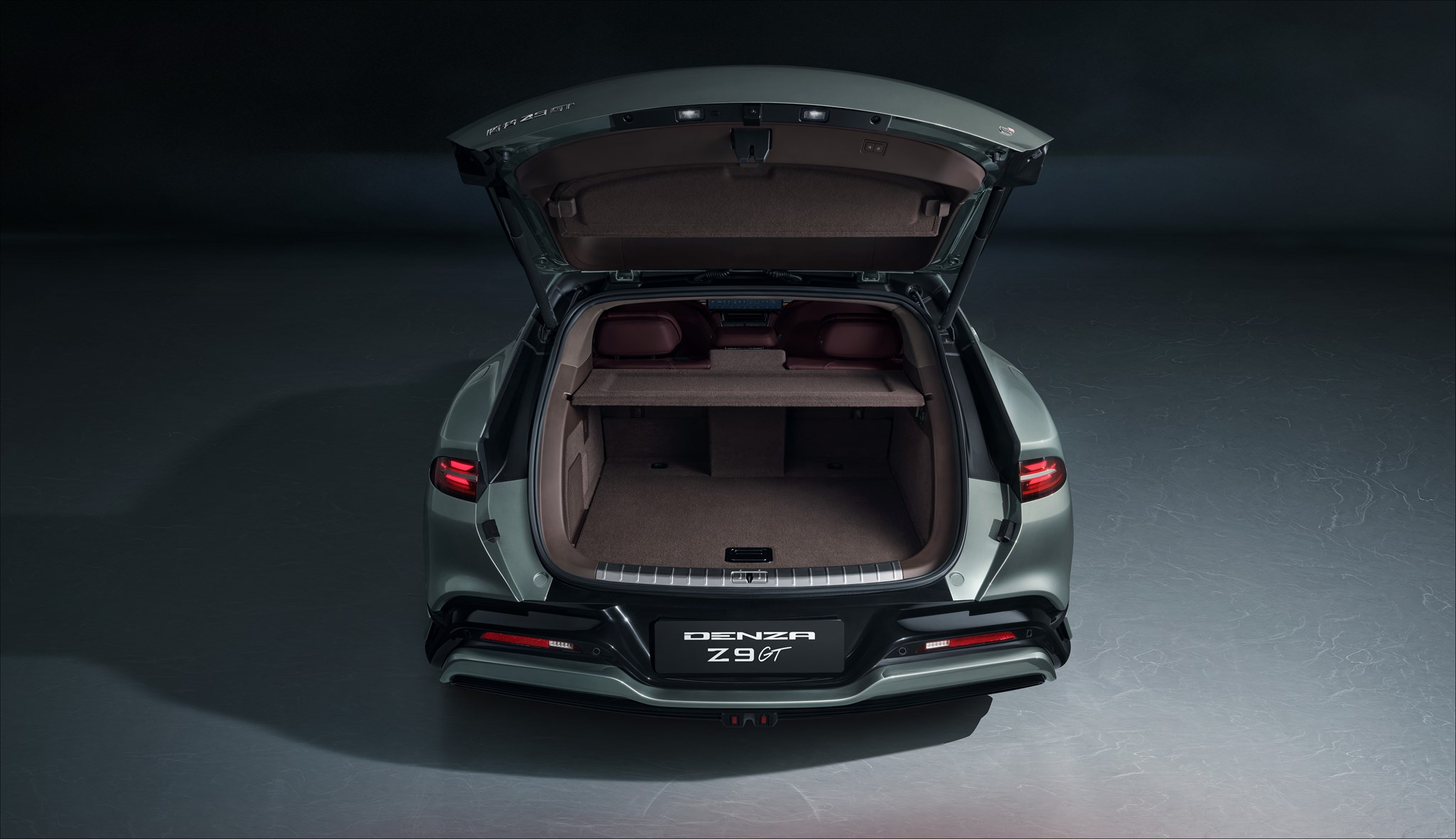
The boot space, however, is relatively small – though that’s partly because a fridge between the rear passengers cuts into the trunk.
Before you buy
We don’t have UK pricing yet but expect something cheaper than cars such as the BMW i7, Mercedes S-Class, Porsche Panamera and BMW i5. CAR also understands the Denza will start above the most expensive BYD car too, which helps narrow the price bracket. Put it all together and we can expect a figure between £70,000 to £90,000 – though the time ‘til launch and global financial situation means anything could happen.
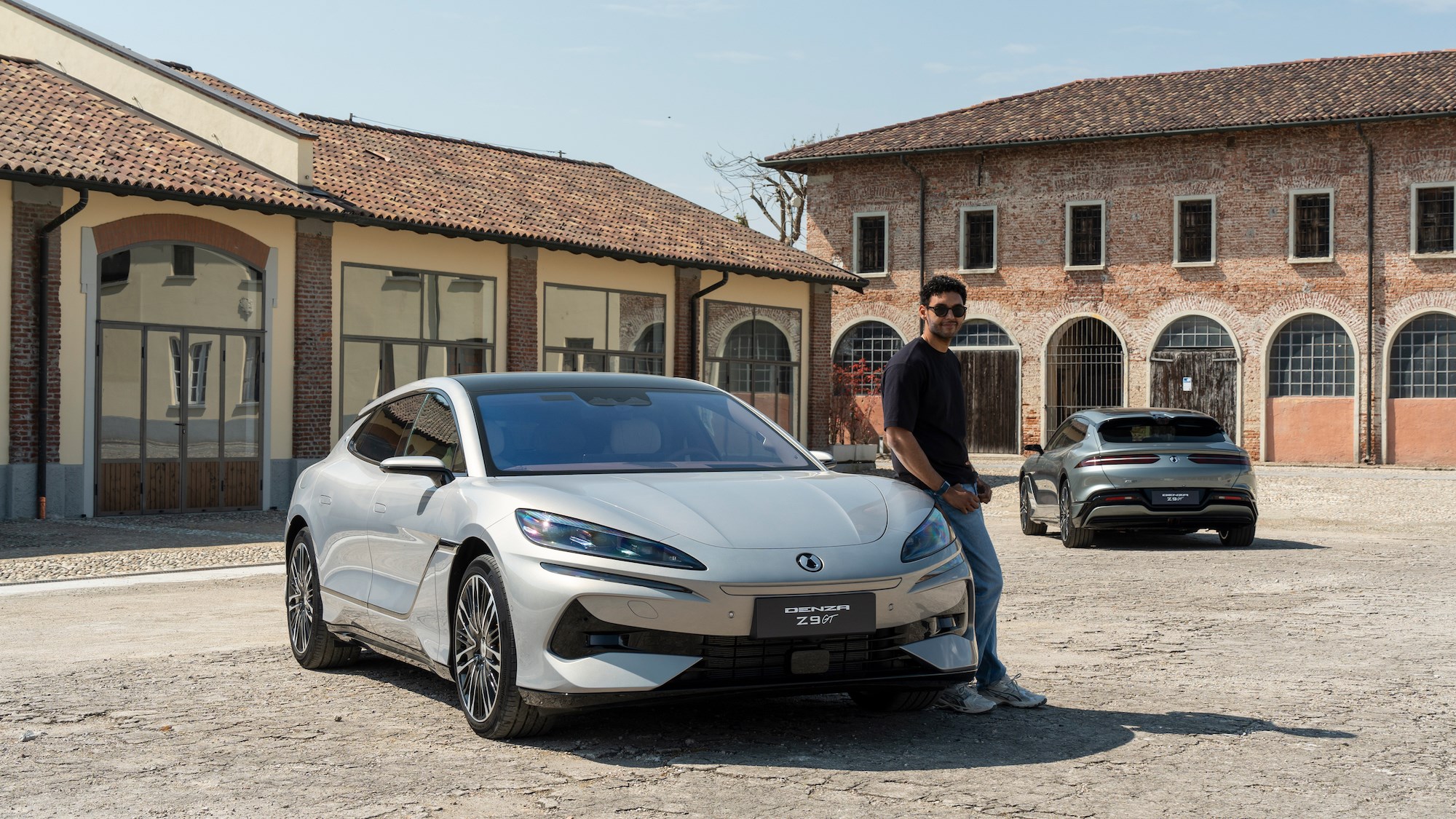
Early verdict
I’ve had a limited look at cars that aren’t too relevant for the UK, along with no pricing – so it’s hard to draw much of a conclusion. What we can say is that the styling works well enough in person and the interior feels quirky if not old-school in a luxurious way. There’s lots of tech too and while the handling and inputs need retuning for the UK market, the car clearly has the hardware to offer a cossetted ride.
The range and performance figures sound good too, even considering reduced power and stretched range for EU-spec cars. However, the figure this car, like many other Chinese cars hinges on, is the price – we’ll have to wait for that.